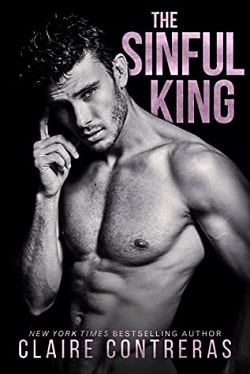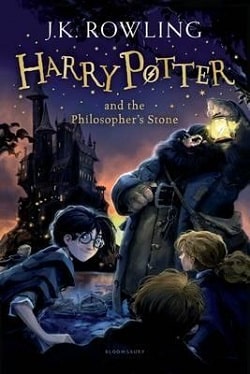“None, General,” said Salkind. “Goshawk is like a smart rock. It’s coming down at close to ten thousand miles per hour. Apart from its receiver for getting information from Kestrel and its tiny radar for following instructions to the target for the last fifteen thousand feet, it has no technology. That’s why it’s so cheap. But the effect often kilograms of tungsten-tipped steel at that speed hitting a tank is like ... well, like firing an air-gun pellet onto the back of a cockroach at point-blank range. That tank just stopped the equivalent of two Amtrak locomotives at a hundred miles per hour. It was just flattened.”
The test continued for another two hours. The manufacturers proved they could reprogram the Kestrel in flight; if they told it to go for steel structures with water on each side and land at each end, it would take out bridges. If they changed the hunting profile, it would strike at trains, barges, or moving columns of trucks. So long as they were moving. Stationary, except for bridges Kestrel did not know if an object was a steel truck or a small steel shed. But its sensors could penetrate rain, cloud, snow, hail, sleet, fog, and darkness.
The groups broke up in mid-afternoon, and the Pentagon committee prepared to board its limousines for Nellis and the flight to Washington.
One of the generals held out his hand to the manufacturers.
“As a tank man,” he said, “I have never seen anything so frightening in my life. It has my vote. It will worry Frunze Street sick. To be hunted by men is bad enough; to be hunted like that by a goddam robot—hell, what a nightmare!”
It was one of the civilians who had the last word.
“Gentlemen, it’s brilliant. The best RPV deep-strike tank-buster system in the world. But I have to say, if this new Nantucket Treaty goes through, it looks like we’ll never order it.”
Cobb, Moir, and Salkind realized as they shared a car back to Las Vegas that Nantucket was facing them, along with thousands of others in the military-industrial complex, with utter corporate and personal ruin.
* * *
On the eve of Christmas there was no work in Alcántara del Rio but much drinking was done and it went on until late. When Antonio finally closed his little bar it was past midnight. Some of his customers lived right there in the village; others drove or walked back to their scattered cottages spread across the hillsides around the villages. Which was why José Francisco, called Pablo, was lurching happily along the track past the house of the tall foreigner, feeling no pain save a slight bursting of the bladder. Finding he could go no farther without relief, he turned to the rubble wall of the yard in which was p
arked the battered SEAT Terra mini-jeep, unzipped his fly, and devoted himself to enjoyment of man’s second greatest single pleasure.
Above his head the tall man slept, and again he dreamed the awful dream that had brought him to these parts. He was drenched in sweat as he went through it all for the hundredth time. Still asleep, he opened his mouth and screamed, “No ... o ... o ... o!”
Down below, Pablo leaped a foot clear in the air and fell back in the road, soaking his Sunday-best trousers. Then he was up and running, his urine sloshing down his legs, his zipper still undone, his organ receiving an unaccustomed breath of fresh air. If the big, rangy foreigner was going to get violent, then he, José Francisco Echevarría, by the grace of God, was not going to stick around. He was polite, all right, and spoke good Spanish, but there was something strange about that man.
In the middle of the following January a young freshman came cycling down St. Giles Street in the ancient British city of Oxford, bent upon meeting his new tutor and enjoying his first full day at Balliol College. He wore thick corduroy trousers and a down parka against the cold, but over it he had insisted on wearing the black academic gown of an undergraduate at Oxford University. It flapped in the wind. Later he would learn that most undergraduates did not wear them unless eating in hall, but as a newcomer he was very proud of it. He would have preferred to live in college, but his family had rented him a large house just off the Woodstock Road. He passed the Martyrs’ Memorial and entered Magdalen Street.
Behind him, unperceived, a plain sedan came to a halt. There were three men in it, two in the front and one in the back. The third man leaned forward.
“Magdalen Street is restricted access. Not for cars. You’ll have to continue on foot.”
The man in the front passenger seat swore softly and slipped to the pavement. At a fast walk he glided through the crowd, intent on the cycling figure ahead of him. Directed by the man in the back, the car swerved right into Beaumont Street, then left into Gloucester Street and another left down George Street. It stopped, having reached the bottom end of Magdalen, just as the cyclist emerged. The freshman dismounted a few yards into Broad Street, across the junction, so the car did not move. The third man came out of Magdalen, flushed from the icy wind, glanced around, spotted the car, and rejoined them.
“Damn city,” he remarked. “All one-way streets and no-entry areas.”
The man in the back chuckled.
“That’s why the students use bicycles. Maybe we should.”
“Just keep watching,” said the driver without humor. The man beside him fell silent and adjusted the gun under his left arm.
The student had dismounted and was staring down at a cross made of cobblestones in the middle of Broad Street. He had learned from his guidebook that on this spot in 1555 two bishops, Latimer and Ridley, had been burned alive on the orders of Catholic Queen Mary. As the flames took hold, Bishop Latimer called across to his fellow martyr: “Be of good comfort, Master Ridley, and play the man. We shall this day light such a candle by God’s grace in England as I trust shall never be put out.”
He meant the candle of the Protestant faith, but what Bishop Ridley replied is not recorded, since he was burning brightly at the time. A year later, on the same spot in 1556, Archbishop Cranmer followed them to death. The flames from the pyre had scorched the door of Balliol College a few yards away. Later that door was taken down and rehung at the entrance to the Inner Quadrangle, where the scorch marks are plainly visible today.
“Hello,” said a voice by the student’s side and he glanced down. He was tall and gangly; she, short with dark bright eyes and plump as a partridge. “I’m Jenny. I think we’re sharing the same tutor.”
The twenty-one-year-old freshman, attending Oxford on a junior-year-abroad program after two years at Yale, grinned.
“Hi. I’m Simon.”
They walked across to the arched entrance to the college, the young man pushing his bicycle. He had been there the day before to meet the master, but that had been by car. Halfway through the arch they were confronted by the amiable but implacable figure of Tim Ward-Barber.
“New to the college, are we, sir?” he asked.
“Er, yes,” said Simon. “First day, I guess.”
“Very well then, let us learn the first rule of life here. Never, under any circumstances, drunk, drugged, or half-asleep, do we ever push, carry, or ride our bicycles through the arch into the quadrangle. Sir. Prop it against the wall with the others, if you please.”















